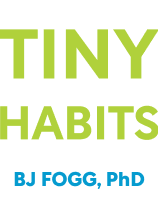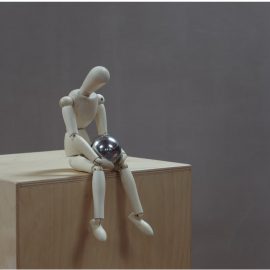

This article is an excerpt from the Shortform book guide to "Tiny Habits" by BJ Fogg. Shortform has the world's best summaries and analyses of books you should be reading.
Like this article? Sign up for a free trial here .
Are you trying to rid yourself of bad habits? Do you want to develop new, positive habits in your life? How can Behavior Prompts help you?
A Behavior Prompt is your reminder to initiate your new behavior. Without a Prompt, a behavior won’t properly stick. There are three different types of prompts and this article will help you choose which type is best for you.
Keep reading for more information about behavior Prompts.
How to Choose Your Behavior Prompt
Before we dive into Behavior Prompts, it’s important to know a little bit about the Fogg Behavior Model. The Fogg Behavior Model is a simple formula that lets you pick apart the components of any particular behavior. This formula is B = MAP, where B is Behavior, M is Motivation, A is Ability, and P is Prompt. A behavior only happens when all three MAP variables are present at the same time.
Let’s look at each of these components in turn:
- Motivation is less important than most of us think. It’s unreliable, it’s hard to budge, and some of our motivations are unconscious or conflict with one another. On top of that, motivation can be especially difficult to muster when we’re stressed.
- Ability is how easy or difficult it is for us to do the behavior. We can work with Ability in two ways: by improving our own skills, or by making the behavior easier (the central method in Tiny Habits).
- The Prompt is your reminder to do the behavior. Without the Prompt, it doesn’t matter how high your Ability and Motivation are—the behavior won’t happen.
This article will be focusing on the Behavior Prompts.
Person Prompts
In Person Prompts, you remind yourself to do the action. The most reliable subset of these is using primary physical needs as your reminder. For example, you feel hungry, so you eat.
Here’s an example: Fogg wanted to do pushups throughout his day. He decided to use peeing as the Prompt, and now has an established habit of doing at least two pushups immediately after he pees.
But Person Prompts can be unreliable, especially if they rely on your memory.
Context Prompts
In Context Prompts, something in your environment reminds you to do the action. Post-its, notes on your hand, phone notifications, reminders from others, and putting something where you can see it are all examples of context Prompts.
Context Prompts can become overwhelming, and it’s easy to become habituated and start to ignore them. We can manage context Prompts in our environment by silencing our phones, hanging up DO NOT DISTURB signs, and directing people to certain communication channels (for example, not using text messaging for work purposes).
Context Prompts can be effective, but design is important. If a context Prompt isn’t working, design another Prompt and try again.
Action Prompts
In Action Prompts, an existing action in your routine Prompts a new action. For example, brushing your teeth Prompts you to floss, setting your coffee on the desk Prompts you to look at your To Do list, hanging up your coat when you get home Prompts you to play with the dog.
This is like computer code: if you get the sequence right, there’s a predictable outcome.
Action Prompts are the “secret sauce” of Tiny Habits and are also known as Anchors.
The key to an effective Prompt is after. The desired behavior should be executable immediately after the Prompt. A well-designed Prompt has a clearly defined ending, and this ending serves as a cue for the desired behavior.
Advice on Implementing Anchors
Morning routines are better because they’re more stable. Later in the day, our routines are more likely to fall apart. Analyze your desired new habit and tailor the Anchor accordingly. Where does the habit fit best into your routine?
There are a few different ways to pair new habits with Anchors. These are, from most to least effective:
Pair by location. Can you find an Anchor that you already do in the same place? (Pair a new habit in the garden with something you already do regularly in the garden.)
Pair by frequency. How often do you want to do the new habit? (Pair a new once-a-week habit with something you already do once a week.)
Pair by objective. Can you find an Anchor that shares a common goal with your new habit? Note that this is very personal. If your morning coffee is a signal to jump into your work day, you could pair it with looking over your To Do list. But if it’s about quiet, reflective time, you could pair it with taking three deep breaths.
Sarika, whom we met earlier, paired watering her houseplant with taking a drink of water herself. This way, when she nourished the plant with water she also nourished herself.
Bad Anchors don’t match any of the above. “After I take a shower, I will sort the laundry” doesn’t match location, frequency, or objective. This new habit has a low chance of success.
Anchors need to be clear. If an Anchor isn’t working, perhaps it’s not clear enough. To solve this, look for the “Trailing Edge”: the exact moment when the action ends.
For example, “after I get home from work” is a fuzzy Anchor. Does getting home from work end when you walk in the door? When you put down your bag? When you change out of your work clothes? Find the Trailing Edge and anchor the new habit to that.
It helps to look for a final action that gives you a sensory cue, for example:
- The sound of the water turning off as a cue to wipe the kitchen bench.
- The sound of a car door closing as a cue to write a task on a Post-it.
If it helps, look for a strong Anchor first and then decide which behavior to pair with it. Are there any regular actions in your daily routine with clear-cut edges? What new habit could you introduce there?
If an Anchor doesn’t work, keep experimenting. Change the recipe to see what works best. By experimenting, you’re improving your skills in pairing habits with Anchors in the context of your own preferences and routine.
You’ll know when something feels right.
Using Behavior Prompts in Business
Fogg believes that successful businesses of the future will rely less on context Prompts and more on action Prompts. For example, a medical insurance company might ask its customers about their daily routines and use this information to tailor its reminders to clients.
Example: Amy and the Car Door
Habiteer Amy owns her own business and she’s struggling to accomplish business-related tasks. Each morning, she drives her daughter Rachel to school. After she says goodbye to Rachel (more specifically, when Rachel closes the car door), Amy drives immediately to a free nearby parking space and does her Tiny Behavior: writing her most pressing task for the day on a Post-it note. She then drives home and puts the Post-it on the wall near her desk. On most days she goes on to do the task, and this generates momentum for completing other pending tasks. On some days, she doesn’t do the task—but as long as she’s written it on the Post-it, the habit is secure.
This Prompt of Rachel closing the car door is effective because:
* It’s linked to a sensory cue (sound of car door closing)
* It’s the first task in Amy’s work day
* It fits seamlessly into her existing daily routine.

———End of Preview———
Like what you just read? Read the rest of the world's best book summary and analysis of BJ Fogg's "Tiny Habits" at Shortform .
Here's what you'll find in our full Tiny Habits summary :
- How you can successfully create new habits that stick
- Why you don't need motivation, just science
- Why even flossing one tooth should be considered a victory






